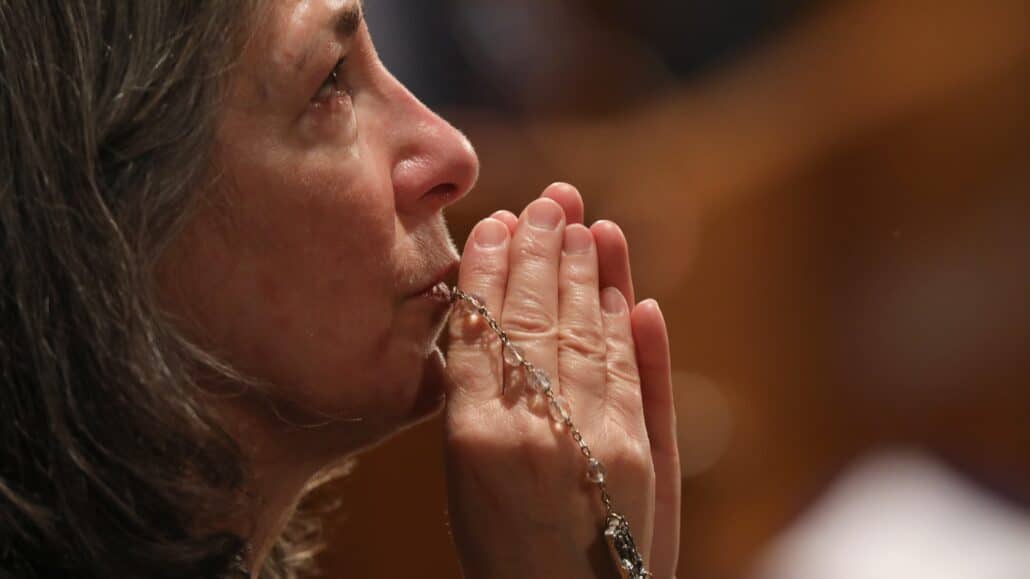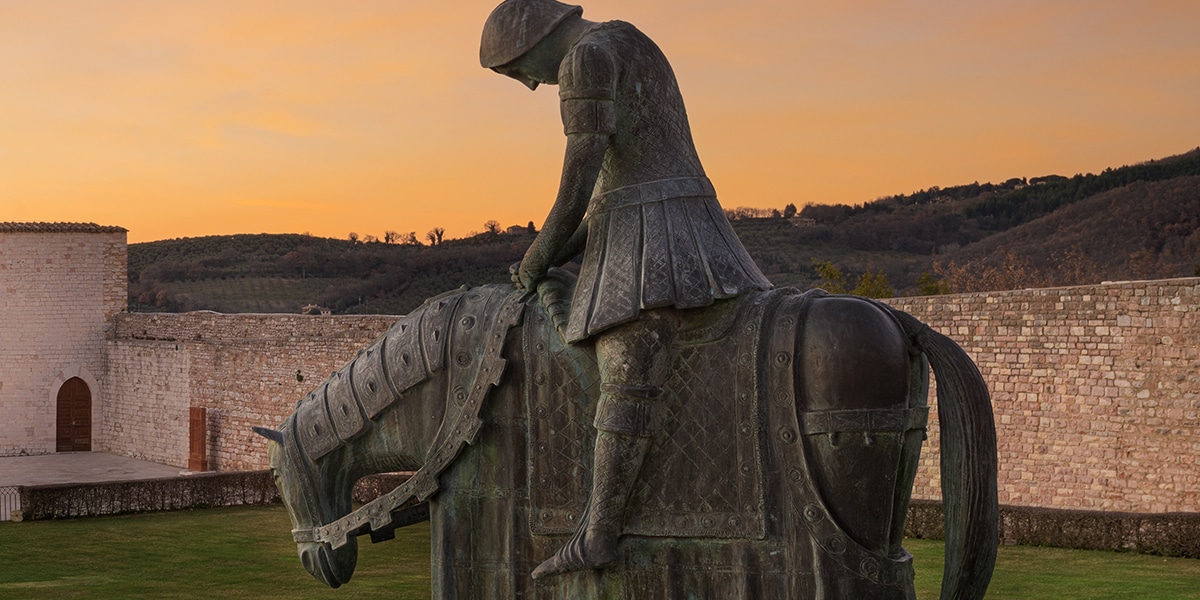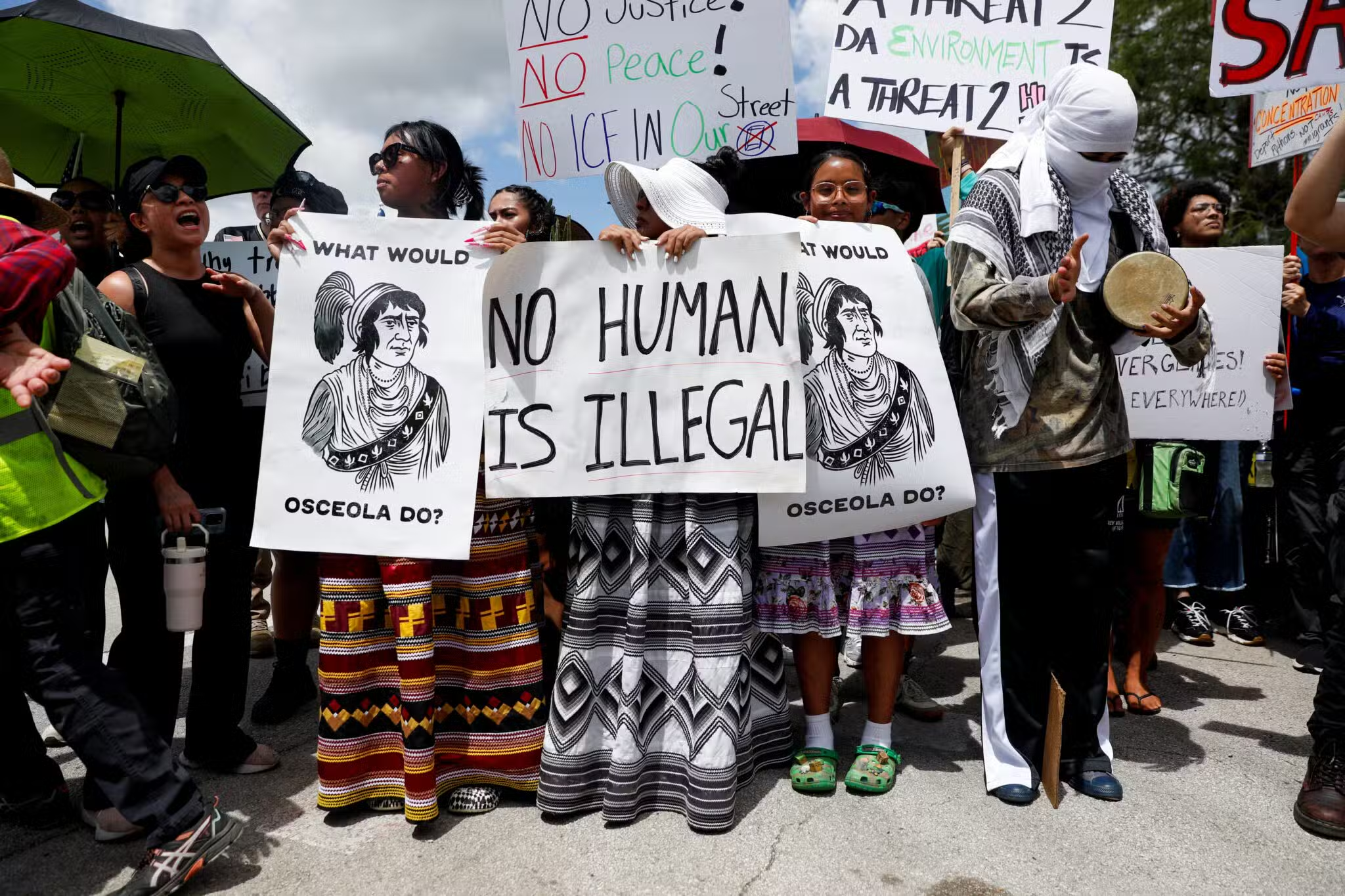The new English translation of the Mass, introduced last Advent, invites Catholics to take a second look at the Nicene Creed. Phrases such as “consubstantial with the Father” and “incarnate of the Virgin Mary” replace more familiar words we’ve been using for decades.
Early in Christianity our creed was born in fierce debates about what we believe. The ancient words invite our “Amen” to this faith forged by the early Church. It’s like a handshake across the centuries — “a sign of recognition and communion between believers” (Catechism of the Catholic Church 188).
I believe in one God,
the Father almighty,
maker of heaven and earth,
of all things visible and invisible.
We live in a secular age. The media avoid endorsing religion or belief in a power that controls “things visible and invisible.” God is largely absent from official public debate. We become skeptical when politicians play up their religion only to disappoint us later with scandals. Science, too, seems to dominate our culture. Recent discoveries about the origins of the universe avoid mention of a “maker of heaven and earth.”
Yet, when disaster strikes, people ask, “Where is God?” Even when they express doubts about a loving Creator, their words betray a longing for God.
The faith of ancient Israel stood out among its neighbors, who believed in many gods. Abraham and his nomadic tribe came to know God as One, loving and willing to travel with them. Theirs was a personal God, who invites people into relationship.
Our creed assures us that, like Abraham, we’re invited into relationship with God. Our God — creator, all-powerful, eternal — is also personal and loving.
I believe in one Lord Jesus Christ,
the Only Begotten Son of God,
born of the Father before all ages.
God from God, Light from Light,
true God from true God,
begotten, not made,
consubstantial with the Father;
through him all things were made.
By Jesus’ time, Israel’s belief in one God was well established. And so it challenged many to accept Jesus as divine. In Jesus’ trial before the Sanhedrin, the high priest accuses Jesus of blasphemy because he claims divine sonship. Professing faith in the “Only Begotten Son of God” shook the faith of many of Jesus’ contemporaries.
As Christians moved into the world of Greek philosophers, understanding Jesus as divine remained a challenge. Arius, a fourth-century priest, denied Christ’s divinity and lit a theological wildfire that swept through the Christian world. Arius held that the Son of God didn’t exist “before all ages,” that Jesus was a created being, not divine.
The Arian heresy divided the Church. The Council of Nicaea (325) issued a statement of faith, or creed. It proclaims that “the Son of God is ‘begotten, not made, of the same substance … as the Father’” (CCC 465). The Greek expression for “of the same substance” is translated into Latin in a word that, translated exactly, is consubstantial. The tongue-twister “consubstantial with the Father,” then, describes Jesus. We profess that “through him all things were made.” Creation testifies to how much God is in love with us, as fully revealed in Jesus.
For us men and for our salvation
he came down from heaven,
and by the Holy Spirit
was incarnate of the Virgin Mary,
and became man.
We bow as we profess our faith in the Incarnation, indicating its centrality to Christianity. Jesus “is truly the Son of God who, without ceasing to be God and Lord, became a man and our brother” (CCC 469). The Love that created everything entered our world and became part of it.
If we’re ever tempted to discount our humanity, this action of God makes us stop and reevaluate. The Incarnation tells us how much God loves us. By becoming one of us, God gives us the chance to share in divinity. We discover in Jesus what, with God’s grace, we can become. No wonder we bow in respect at these words!
For our sake he was crucified
under Pontius Pilate,
he suffered death and was buried,
and rose again on the third day
in accordance with the Scriptures.
He ascended into heaven
and is seated at the right hand of
the Father.
He will come again in glory
to judge the living and the dead
and his kingdom will have no end.
As a priest, a presider at liturgy, I’m wary of using the term “paschal mystery.” I wonder if most folks know what it means. This section of the creed explains the paschal mystery — Jesus’ great act of love. John’s Gospel says, “No one has greater love than this, to lay down one’s life for one’s friends” (15:13). Jesus did just that “[f]or our sake.”
Jesus’ act of love wasn’t simply that of a battlefield hero who dies to save his buddies. The word paschal gives us a clue. Jesus has a Passover from death to life. What he does through his life, death and resurrection is linked to the liberating action of God, who freed his people from slavery in Egypt and made a covenant of love with them. God leads us to new life, a deeper relationship.
In Jesus’ Passover we’re brought into a new covenant. The resurrection establishes Jesus as risen Lord, one who now invites us into a “kingdom [which] will have no end.” We must live each day prepared for that day when Christ “will come again in glory.”
I believe in the Holy Spirit,
the Lord, the giver of life,
who proceeds from the Father and the Son,
who with the Father and the Son is adored and glorified,
who has spoken through the prophets.
When Jesus promised “new life” to his followers, he wanted them to live the way of love and forgiveness he’d modeled in his life and ministry. After his resurrection, Jesus shared the Holy
Spirit so his followers could forgive and heal in his name.
The Holy Spirit is “the Lord, the giver of life,” the love of Father and Son expressed so perfectly that a third divine person is to be “adored and glorified.” The Spirit was present in the words of the prophets of old, reminded Jesus’ apostles of all he said and did and is now given to us in the Church.
I believe in one, holy,
catholic and apostolic Church.
People often ask me, “Father, why does the Church … ?” I know they’re referring to the Church’s leadership. But I want to say, “You are the Church!”
To understand what we are as Church, the creed gives us four “marks of the Church”: one, holy, catholic and apostolic.
There is one way for us to really know Jesus and what he’s about — in the Church, its sacraments and teachings. Though made up of different people and expressions of Catholic life, the Church remains a unity because God is one, and we profess Jesus as “one Lord.”
The Church’s teaching is reliable, because it’s apostolic — connected to Jesus through his apostles and those who came after to continue his work. Being catholic means Jesus is fully present in the Church, which fulfills Jesus’ command to carry his message to the ends of the earth. Although retold in many languages and cultures, the message of love and forgiveness remains constant.
It may be difficult for some to call the Church holy because of the failings of some Christians. The Church’s holiness is about what all of us are together as Church, as the “Body of Christ.” We belong to the Church in order to become holy, to share the life of Jesus through the sacraments.
Once we think about these four ways to describe the Church, perhaps it will be easier to say, “We are the Church.”
I confess one Baptism
for the forgiveness of sins …
I love baptizing babies — with the water, fragrant oil, white garment, lighted candle and proud family
members gathered. The crying baby doesn’t hurt the effect, either!
As parents seek to give themselves to their children and as a community gathers to embrace new members (infant and adult), we understand how God’s life flows through us. That life has power to sustain us. In joyful celebrations, we sing our gratitude. In sad times, we trust God’s love. In moments of sinfulness, we seek forgiveness.
As a Church, we “confess one Baptism” and all that the life of Jesus, given in the sacraments, means to us.
and I look forward to the resurrection of the dead
and the life of the world to come.
I’ve celebrated the lives of many Catholics in the funeral liturgy. Family and friends often talk about the faith of their loved one: “Mom always prayed her rosary.” “Dad made sure we went to Mass.” “She was a faithful parish volunteer.”
Expressions like these say how much we belong to Jesus. They also point to how much we “look forward” to the “life of the world to come.” We live our lives here and now, knowing there’s more!
We may not be able to describe the “resurrection of the dead” in terms we can comprehend. But we recognize what awaits us when we see Catholics who live their faith fully.
In the end, the creed calls us back to its beginning: love. The God who made “heaven and earth” in love, embraced all creation in Jesus Christ, loved us even to the gift of his life and sent the Spirit of love into the world — that God awaits us in the life of the world to come.
In the end, we say Amen to love!








